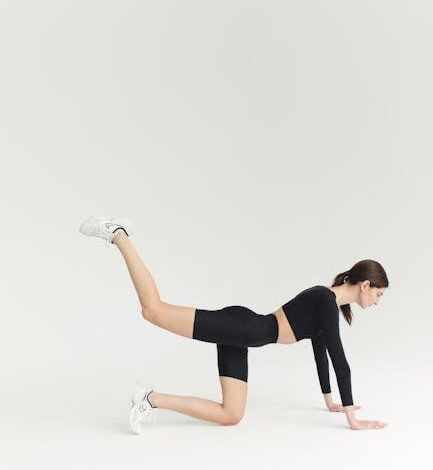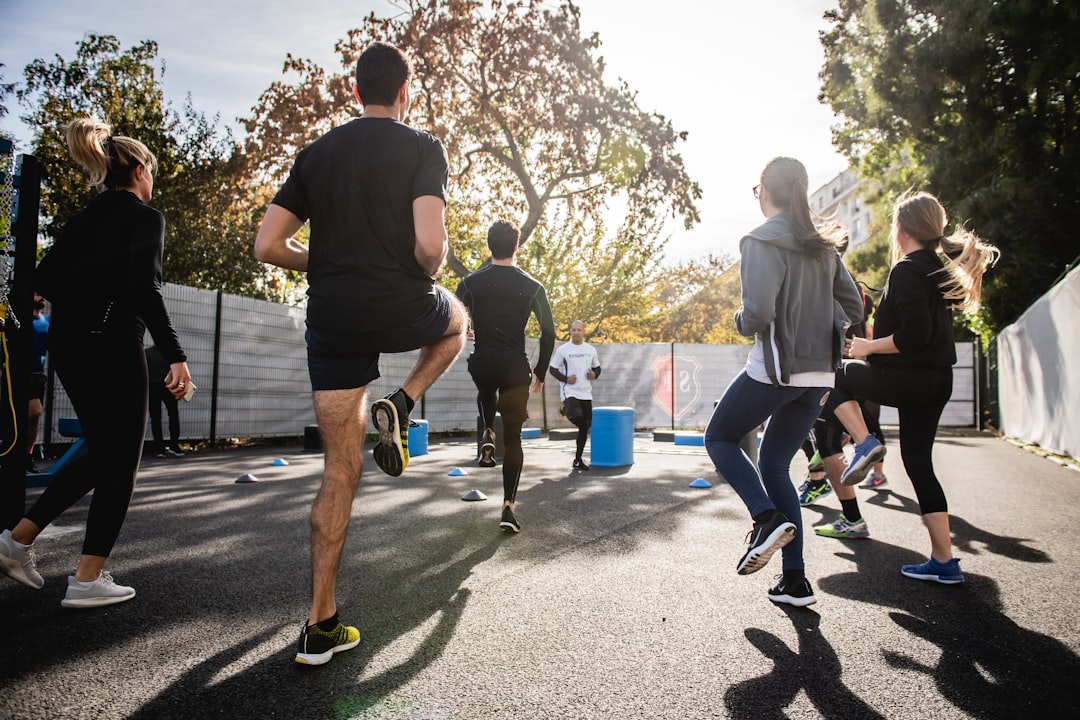Best Free Calisthenics Program

So, you’re looking to get into calisthenics and want to find a free program? Awesome! Calisthenics is a fantastic way to build strength, improve your fitness, and feel great – all without needing a ton of expensive equipment. It’s all about using your own body weight as resistance. Let’s dive into how to find the best free calisthenics program for you, and what to look for.

What Makes a Calisthenics Program “Good”?
Before we jump into specific programs, let’s talk about what makes a calisthenics program effective and safe. A good program should be:
* **Progressive:** It starts easy and gradually gets harder. This is super important to avoid injury and see consistent progress. You don’t want to jump into advanced moves right away!
* **Balanced:** It works all the major muscle groups in your body: chest, back, shoulders, arms, core, and legs. You want to be well-rounded, not just focus on one area.
* **Scalable:** It offers modifications for different fitness levels. Whether you’re a complete beginner or already have some strength, there should be ways to adjust the exercises.
* **Well-explained:** It provides clear instructions and demonstrations of each exercise. Good form is key to preventing injuries and maximizing results.
* **Sustainable:** It’s something you can realistically stick to over time. A program that’s too intense or time-consuming is likely to be abandoned.
These are the factors I consider when assessing whether a calisthenics program will provide you with the best start possible.
Finding Free Calisthenics Programs Online
The internet is full of free calisthenics programs – the trick is finding the *good* ones! Here are some places to look and what to expect:
* **YouTube:** YouTube is a goldmine! Search for “beginner calisthenics program,” “calisthenics for beginners,” or similar terms. Look for channels run by qualified trainers or experienced calisthenics practitioners. Pay attention to their form cues and explanations. Some channels even offer structured programs you can follow along with.
* **Fitness Blogs and Websites:** Many fitness blogs and websites offer free calisthenics routines or programs. Search for phrases like “free calisthenics workout plan” or “beginner bodyweight workout.” Be sure to check the credentials of the authors or trainers behind the content.
* **Fitness Apps:** Some fitness apps offer free calisthenics programs or trials. While many apps require subscriptions for full access, the free versions can often provide a solid starting point.
* **Reddit and Online Forums:** Online communities like Reddit’s r/bodyweightfitness are fantastic places to find recommended routines and ask questions. You’ll find lots of experienced people willing to share advice and resources.
When you’re searching, keep those “good program” qualities in mind. Look for programs that are progressive, balanced, scalable, and well-explained.
Sample Beginner Calisthenics Routine (You Can Start Today!)
Okay, let’s get practical. Here’s a simple beginner calisthenics routine you can try right now. Remember to listen to your body and stop if you feel any pain!
1. **Warm-up (5-10 minutes):** Light cardio like jogging in place, jumping jacks, arm circles, and dynamic stretching. Dynamic stretching includes movements like leg swings and arm swings. Warming up is essential to prepare your muscles and joints for exercise.
2. **Squats (3 sets of 10-12 reps):** Stand with your feet shoulder-width apart, and lower your hips as if you’re sitting in a chair. Keep your back straight and your knees behind your toes.
3. **Push-ups (3 sets of as many reps as possible):** Start in a plank position with your hands shoulder-width apart. Lower your chest towards the ground, keeping your body in a straight line. Push back up to the starting position. If regular push-ups are too hard, try them on your knees.
4. **Plank (3 sets, hold for 30-60 seconds):** Hold a straight line from your head to your heels, engaging your core muscles.
5. **Walking Lunges (3 sets of 10-12 reps per leg):** Step forward with one leg and lower your hips until both knees are bent at 90 degrees. Push back up to the starting position and repeat with the other leg.
6. **Glute Bridges (3 sets of 15-20 reps):** Lie on your back with your knees bent and feet flat on the floor. Lift your hips off the ground, squeezing your glutes at the top.
7. **Cool-down (5-10 minutes):** Static stretching, holding each stretch for 30 seconds. Static stretches are stretches where you hold a position without movement, such as hamstring stretches or quad stretches.
Perform this routine 2-3 times per week, with rest days in between. As you get stronger, you can increase the reps, sets, or difficulty of the exercises. For instance, you can try incline push-ups (hands elevated on a bench or wall) to make them easier, or decline push-ups (feet elevated) to make them harder.
Important Considerations and Safety Tips
Calisthenics is generally safe, but it’s important to take precautions:
* **Start slowly:** Don’t try to do too much too soon. Gradually increase the intensity and volume of your workouts.
* **Use proper form:** Focus on quality over quantity. It’s better to do fewer reps with good form than many reps with bad form. Watch videos and pay attention to how your body feels.
* **Listen to your body:** If you feel any pain, stop the exercise immediately. Don’t push through pain.
* **Warm-up and cool-down:** Always warm up before each workout and cool down afterward. This helps prevent injuries and improve recovery.
* **Stay hydrated:** Drink plenty of water before, during, and after your workouts.
* **Consult with a doctor:** If you have any underlying health conditions, talk to your doctor before starting a new exercise program.
Remember, consistency is key. It’s better to do a little bit of exercise regularly than to do a lot of exercise sporadically.
Progression: Making Calisthenics More Challenging
As you get stronger, you’ll need to make your calisthenics workouts more challenging to continue seeing progress. Here are a few ways to do that:
* **Increase reps and sets:** Simply do more reps or sets of each exercise.
* **Decrease rest time:** Reduce the amount of rest you take between sets.
* **Try harder variations:** Progress to more difficult versions of the exercises. For example, move from knee push-ups to regular push-ups, then to diamond push-ups. For squats, progress from bodyweight squats to pistol squats (single-leg squats).
* **Add resistance:** Use resistance bands or a weighted vest to make the exercises more challenging.
* **Focus on explosiveness:** Incorporate plyometric exercises like jump squats or clapping push-ups.
Progressing is the most exciting aspect of calisthenics, and it is the best sign that your efforts are paying off.
Finding What Works for You
Everyone is different, so what works for one person might not work for another. Experiment with different routines and exercises to find what you enjoy and what challenges you. The best calisthenics program is the one that you can stick with consistently.
Frequently Asked Questions
Is calisthenics enough to build muscle?
Yes, calisthenics can definitely build muscle! It might not lead to the same level of hypertrophy (muscle growth) as heavy weightlifting for some people, but it’s an effective way to build strength and muscle, especially when you focus on progressive overload and challenging variations.
How long does it take to see results from calisthenics?
You’ll likely start to notice changes in your strength and muscle tone within a few weeks of consistently following a calisthenics program. Significant changes usually take a few months, depending on your starting point, diet, and consistency.
Do I need any equipment for calisthenics?
The beauty of calisthenics is that you don’t *need* any equipment. However, a pull-up bar can be a great addition for back exercises, and resistance bands can add variety and challenge. But you can get a great workout with just your body weight.
Can I combine calisthenics with other forms of exercise?
Absolutely! Combining calisthenics with other forms of exercise, like weightlifting, running, or yoga, can be a great way to create a well-rounded fitness routine. Many people use calisthenics as a supplementary form of exercise.
In conclusion, finding the “best” free calisthenics program is all about understanding your own fitness level, finding a program that’s progressive, balanced, and well-explained, and most importantly, being consistent. Start slow, listen to your body, and enjoy the journey!



